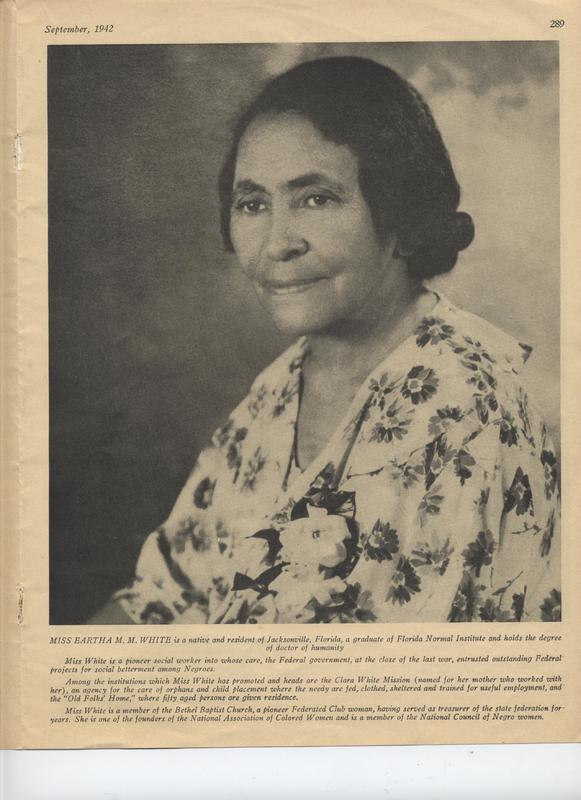“First Ladies of Colored America”
A 1942 article from the NAACP’s The Crisis titled “First Ladies of Colored America” sought to honor the life’s work of women who shaped the lives of African Americans throughout the country. Among a list of influential black women organizers, Eartha M.M. White appears as one of the featured “First Ladies.” The writer of the article stressed the importance of African American women in the creation of black communities within the United States and the formation of an identity that was both American and African. They highlighted cooperation between black men and women in civil rights organizations and mutual aid programs that allowed black communities to survive together. Women, they argued, provided unity for disparate religious and secular organizations, making cooperation towards a united goal of racial equality possible. While acknowledging that black women’s roles were not always recognized, the writer asserted, “Equality of the sexes is an old story in Negro life.” The writer’s perspective provides an interesting framework through which to view the history of the role of black women in leading and organizing.
As the author of the Crisis article noted, express acknowledgment and appreciation of the contributions of black women were rare in the decades preceding the publication of the article. Often their labor has been historically invisible and unrecognized. Black women have fought to create public spaces for themselves and to gain leadership positions that formalized the important positions they already played. At the intersection of race and gender discrimination, black women activists faced racism from white American society and misogyny from their male counterparts. Additionally, the racism that targeted black women had a particularly gendered slant, making the navigation of the politics of respectability and autonomy of concern to most of these activists. The women featured in this exhibit, like the Crisis article, primarily consist of upper and middle class black women, those who would be given the title “First Ladies” and had the time and resources to do the work of the activist. Through documents found in the Eartha M. M. White Collection, we can examine black women’s unique position by using an intersectional analysis to consider the effects of race, class, and gender and to understand how they gained more visible prominence in the early 20th century.

